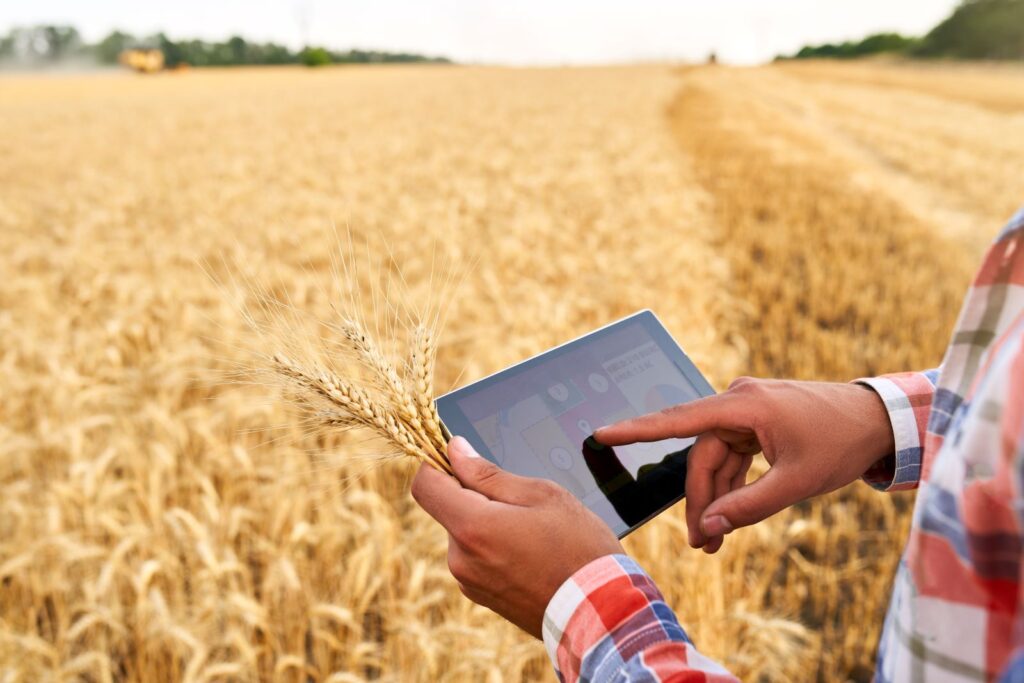How measuring and managing carbon emissions can advance your farm business
13th April 2023
Becky Wilson from Farm Carbon Toolkit explained how understanding where emissions come from on a farm can support informed decision-making on reducing carbon footprint, which can lead to increased business resilience and profitability, at a farming conference hosted by accountancy firm Scrutton Bland in early 2023.

According to Ms Wilson, identifying the carbon footprint of a business is the first vital step towards being able to quantify the contribution the farm is making to climate change.
In practice, this means determining the quantity and sources of carbon dioxide (CO2), methane (CH4), and nitrous oxide (N2O) emitted from the farm, which highlights current sequestration and offsetting options as well as future opportunities for reducing greenhouse gas (GHG) emissions.
Using Farm Carbon Toolkit’s free carbon calculator, farmers can measure their emissions and identify where the farm might currently be holding carbon in its woodlands or hedgerows.
Created by farmers for farmers, Farm Carbon Toolkit provides tools and services to measure carbon impact and runs projects with farmers that inspire real action on the ground.
The company’s vision is a farming sector that minimises its carbon emissions and maximises carbon sequestration, whilst producing quality food and a wide range of public goods, all produced by resilient and profitable farm businesses.
Farm Carbon Toolkit spends a lot of time measuring current soil carbon storage, working with farmers to make changes that reduce GHG emissions and improve soil health, and using information from measurements to support landowners in making impactful decisions.
Speaking of the potential benefits of managing carbon on-farm, Ms Wilson listed several reasons why farmers should consider getting involved:
- Policy drivers – UK net zero by 2050 goal
- Supply chain pressure
- It makes business sense
- It allows for more informed and better decision making
- It creates business resilience
- Provides a much-needed positive narrative
- Future-proofing
- Income generation opportunities
Ms Wilson explained the bulk of carbon dioxide emissions in agriculture come from deforestation and fossil fuel use when planting, harvesting, transporting and processing crops. Meanwhile, nitrous oxide emissions are related to how soils are managed on a farm, along with fertilisers and manure.
The third compound making up a large part of GHG emissions, methane, is released by livestock production, as well as manure and slurry storage, application and management.
Using the example of an average arable farm, Ms Wilson outlined the various sources of emissions and in what proportion they contribute to the farm’s total carbon footprint:
- Nitrogen fertiliser production and application (60%)
- Fuel use and field operations – such as different cultivation strategies, diesel use (20%)
- P and K fertiliser/manures/liming (10%)
- Sown seeds – i.e. transporting seeds to the field for planting (just under 10%)
- Crop protection (1-2%)
In working towards reducing emissions and ultimately achieving a reduction in input costs, she once again stressed the importance of farmers measuring their own carbon impact to determine hotspots and areas with scope for improvement.
Mitigation strategies
When it comes to the practical side of lowering a farm’s carbon footprint, Ms Wilson highlighted three key areas of focus: reducing energy usage on farm (cultivation strategies, diesel use, smart farming); increasing fertiliser use efficiency; and exploring ways of storing more carbon on the farm (such as by increasing woodland and hedgerows).
Specifically for arable farmers, she recommended reducing energy and fuel use through more efficient machinery usage, as well as transitioning to alternative fuels or electrical power as a possible option. Moreover, precision agriculture and tillage practices can reduce reliance on artificial fertilisers, helped by the use of cover crops and/or under-sown crops.
Emissions from mineralisation can also be reduced by mitigating soil disturbance and making adjustments to the management system relating to tillage practices and rotations, she added.
Regarding energy usage, Ms Wilson said: “Although energy costs may seem insignificant to the overall costs of an agricultural business, reducing these costs can lead to a competitive advantage and as a result increased profitability.”
She noted there’s a real economic benefit to cutting fuel and energy usage on farms, and claimed farmers can save 10% on these costs without any impact on bottom line. This equates to ten tonnes of CO2 saved per year and annual cost savings of £2,000.
Bringing a real-life example, Ms Wilson explained how changing the establishment option for a single crop within the rotation of an arable farm has enabled the business to achieve tangible savings:
“On an arable farm using on average 105 litres of red diesel per hectare, a 10% reduction in red diesel use reduced the farm carbon footprint by 2% per kg grain sold and saved £2,500 on the fuel bill.”
While it’s not possible to eliminate all emissions from agriculture, Ms Wilson said taking action is intricately linked to improving business efficiency, resilience, and the sector’s ability to provide that much-needed climate solution.
“Farmers and growers are at the front line of climate change both in terms of being at risk but also through delivering solutions,” she added.
Concluding her talk, she urged farmers to:
- Understand their baseline
- Evaluate their options and the impact those will make
- Start by looking for the easy wins
- Join the network and spread a positive message in the industry
- Get involved
For more information on how to get started, visit farmcarbontoolkit.org.uk.

